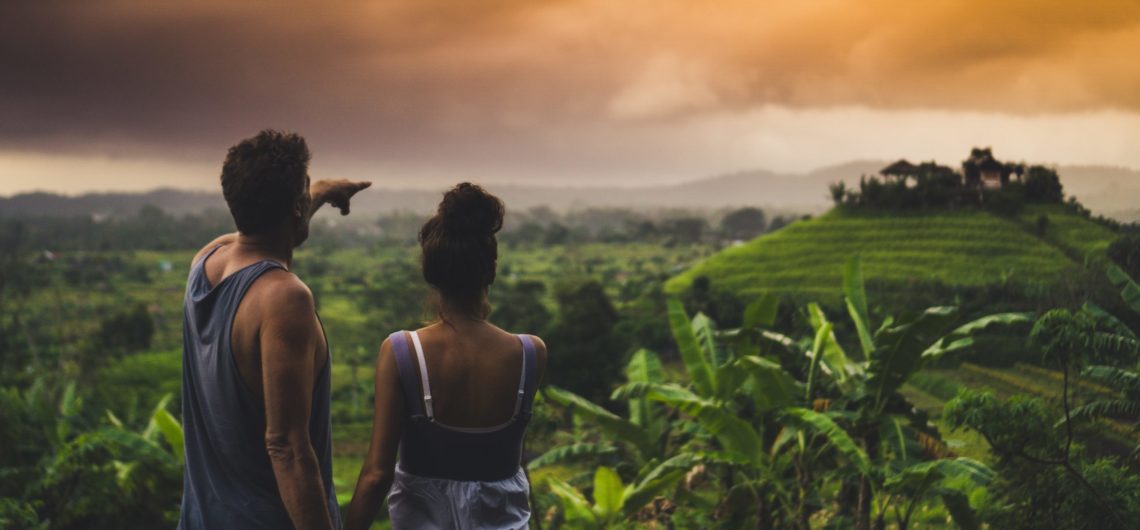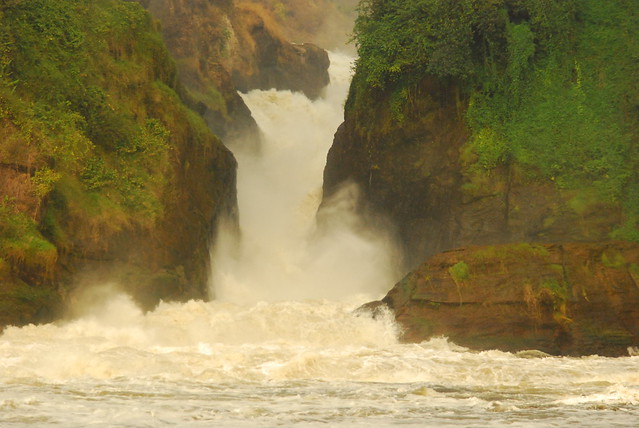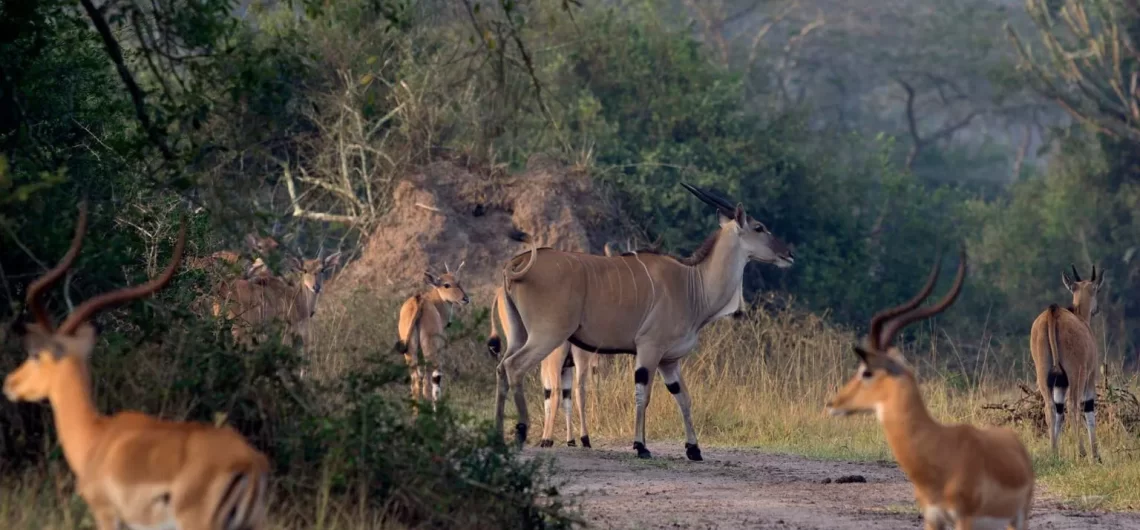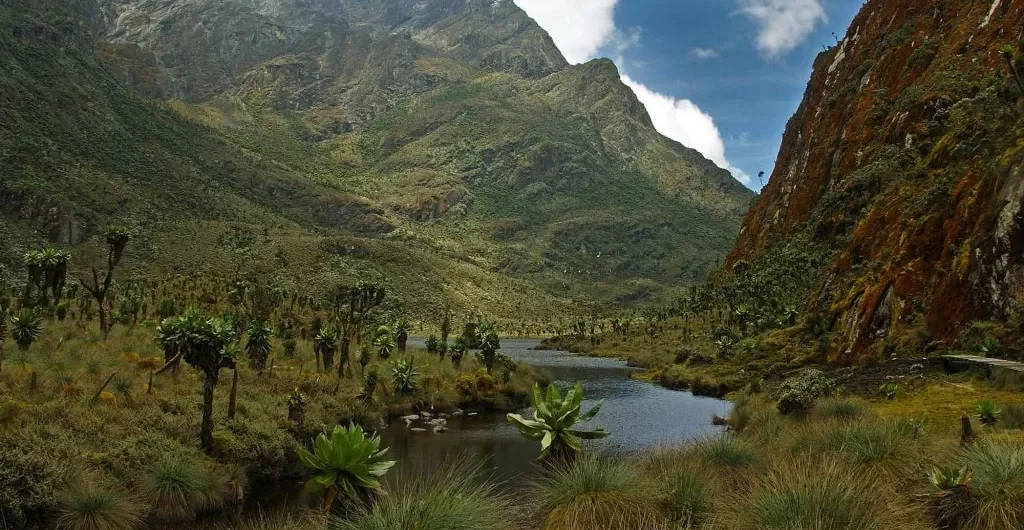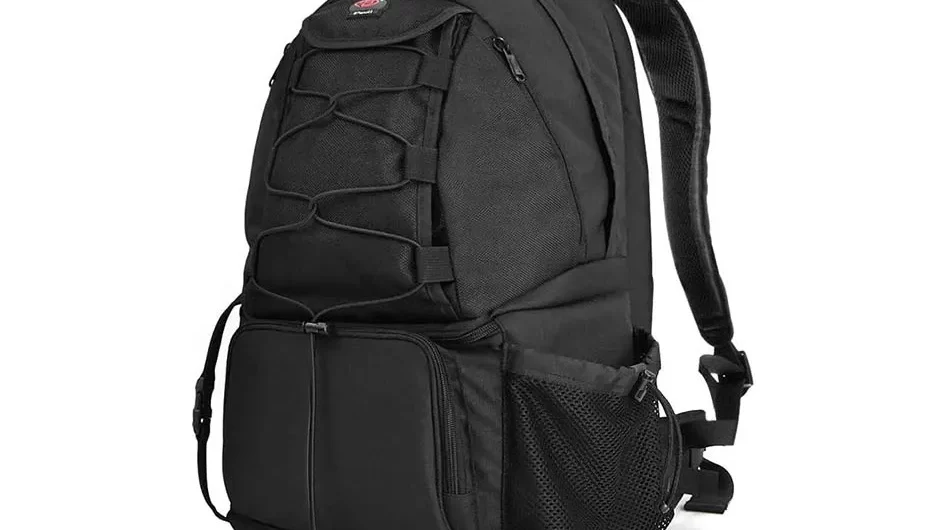Featuring as number 30 on the list, “Landlocked in east-central Africa, Uganda has long been in the shadow of Kenya,
Murchison Falls National Park is one of the best game parks to visit while in Uganda. The park is located in the Murchison Conservation Area where we also find the Bugungu and Karuma wildlife reserves. The park is endowed with several attractions including over 76 mammal species with four members of the big five, the lion, the leopards, the elephants, and the Buffaloes. Other species include bushbucks, Uganda kob, waterbucks and warthogs, giraffes, Jackson’s hartebeest, hyenas etc. Along the shores of the nile and within the waters you will see lots of hippos and crocodiles among other resident creatures. There also several primates in the Murchison falls national park including babaoons and several monkey species. The Murchison falls, Uganda’s largest national park is also home to over 450 recorded birds species including the rare shoebill stork. The park is also home to 23 Albertine rift endemics given its location in the western arm of the east African rift valley. Our Murchison falls birding safaris allow you see many of these bird species with the help of our expert guides. The highlight of your tour in Murchison falls National Park is visiting the “Murchison Falls” a point along the Nile, within the park where River Nile forces its way through a narrow gorge 8 meters wide. The launch trip up stream is very interesting and offers magnificent views of the falls and several wildlife species found along the shores including Buffaloes, Hippos, Crocodiles, waterbucks and birds. Our top tour is the 3 Days Murchison Falls Safari PLANNING FOR MURCHISON FALLS NATIONAL PARK SAFARI Best time to visit Murchison falls (Best time to go to Murchison Falls national park) Located in the northwestern side of Uganda, Murchison falls is the biggest national park in the country covering a total area of 3,840 sq km. It is
Murchison Falls National Park is one of the best game parks to visit while in Uganda. The park is located in
A lake dominates the Mburo National Park with forest-fringed shores hemmed in by rolling green hills, scenically reminiscent of the more celebrated Lake Naivasha in Kenya. With its off-the-beaten-path adventures and hidden gems, Lake Mburo National Park is perfect for viewing wildlife on foot. So pull over, wander off, and let chance be your guide. You don’t need a path for adventure; just 100 meters away from just about any trail in Mburo is likely to reveal a magnificent vista not in any guidebook. Lake Mburo National Park is a small savanna wildlife reserve in southwestern Uganda, an arm’s reach from the capital. It is an excellent stop for long drives to the far southwestern national parks. The 260 square kilometer park is the only protected area in southwestern Uganda to host zebras and the only park in the country with impalas, slender mongooses, and giant bush rats. Why go Mburo is a 4-hour drive from Kampala, Uganda’s most accessible national park. Secondly, due to the absence of the big savannah game players like the elephants and lions, Lake Mburo National Park offers exhilarating walking safari experiences for viewing wild game on foot and horseback. Even without wildlife heavyweights, this small park offers excellent game viewing. You’re likely to see as many different large mammal species over a day’s visit as you would in any Ugandan national park. In addition, the availability of decent safari lodges and the repopulation of some animals, like giraffes, have raised the park’s profile. Safari operators promote Lake Mburo National Park as an ideal overnight stop on the long drive between Kampala and the national parks along the country’s western border. Amazingly, the number of travelers accepting the invitation has risen sharply since exemplary lodges opened up in and just outside the park. Interesting plant and animal
A lake dominates the Mburo National Park with forest-fringed shores hemmed in by rolling green hills, scenically reminiscent of the
In the shadow of Rwenzori Mountains National Park’s soaring peaks are wild rivers, tranquil alpine lakes, and a fascinating array of plant and animal life. And you don’t even have to hike to the summit to see them if you don’t want to. Two popular trails in the park offer exciting and superbly scenic experiences meandering through forests, pristine landscape of alpine vegetation studded with charismatic giant lobelias, groundsels, and heathers specifically unique to the Mountains of the Moon. The combination of spectacular snow-capped peaks, glaciers, V-shaped valleys, fast-flowing rivers with magnificent waterfalls, clear blue lakes, and unique flora make this UNESCO World Heritage Site an exceptional destination for hiking expeditions in Uganda. Rwenzori Mountains National Park encompasses the main part of the legendary Rwenzori mountain chain, which includes some of Africa’s most towering peaks. Margherita towering at 5,109 meters, and Alexandra at 5,083 meters on Mount Stanley, are exceeded in altitude elsewhere in Africa only by Kilimanjaro and Mount Kenya. In addition to Mount Stanley, there are four other glacial peaks in the Rwenzori: Mount Speke (4,890m), Mount Emin (4,791m), Mount Gessi (4,715m), and Mount Luigi da Savoia (4,627m). The collection of towering peaks makes the Rwenzori Mountains the highest mountain range worldwide The summits are spectacular, the routes are uncrowded, and the high-altitude forest teems with natural life. Yet, to most bucket-list hikers, the Rwenzori Mountains National Park is largely unknown, lacking in the shadows of Tanzania’s Mount Kilimanjaro. The park’s plant and animal life Because of the park’s altitudinal range and the nearly constant temperatures and humidity, Rwenzori Mountains National Park has the wealthiest montane flora in Africa. Many botanical species in the park appear bizarre, such as giant heathers, groundsels, lobelias, and other endemics to the Albertine Rift. The higher altitude zones, covered by heath and
In the shadow of Rwenzori Mountains National Park’s soaring peaks are wild rivers, tranquil alpine lakes, and a fascinating array
Two simple rules to bear in mind when you decide what to take with you on a Uganda safari trip — particularly if you expect to use public transport — your packing list should include everything that might not be readily available when you need it, and carry as minimal as possible. Somewhat contradictory rules, you might think, and you’d be right — so the key is finding the right balance, something that probably depends on personal experience as much as anything. Worth stressing is that most genuine necessities are surprisingly easy to get hold of in Uganda’s main centers. Most of the ingenious gadgets you can buy in camping shops are unlikely to amount to much more than dead weight on the road. If it came to it, you could easily travel to Uganda with little more than a change of clothes, a few basic toiletries, and a medical kit. That said, let’s take a look a how your packing list should look like. Luggage Camping Gear Clothing Shoes Binoculous Toilet Bag Other Essentials Your Luggage Filson Medium Rugged Twill Duffel Bag Gear and laptop Daypack Your Uganda trip packing list starts with carrying everything in something like a luggage travel bag. Visitors who are unlikely to be carrying their luggage for any significant distance will probably want to pack most of it in a conventional safari bag (sometimes called a duffel bag). Ensure the suitcase or duffel bad is tough and durable and seals well so that the contents will survive bumpy drives to the game reserves. A lock is a good idea, not only for flights, but for when you leave your case in a hotel room — theft from upmarket safari lodges is unusual in Uganda, but it can happen anywhere in the world. Even a flimsy lock
Two simple rules to bear in mind when you decide what to take with you on a Uganda safari trip — particularly
